| |


Oregon State Hospital has been serving the people of Oregon since 1883. For the first few decades, people were admitted for diagnoses ranging from psychosis brought on by syphilis to epilepsy to “domestic trouble.”
Sadly, there were times when patients passed away and no one stepped forward to claim them. From 1913 to 1973, they were cremated at the hospital’s crematorium, with the goal of eventual reunification with family. On many occasions that wasn’t possible. It may have been because there was no family to notify, the hospital had no one on record to notify, or the family couldn’t afford a burial.
In 2014, OSH opened a memorial as a respectful home for the cremains of more than 3,000 individuals who died while at the hospital or other Oregon institutions. One dedicated volunteer has extensively researched each of these people and published that information online, in the ongoing hope of reunification. In the past 10 years, nearly 1,200 families have been reconnected and long-lost family members can now unravel family mysteries or find a connection to the past.
Every September, we hold a ceremony to honor the people who have been claimed in the past year by their families. This year, we honored 92 people – 70 patients from Oregon State Hospital, 11 patients from Fairview, eight from Oregon State Penitentiary and three from the Tuberculosis Hospital.
This edition of Recovery Times shares some of the families’ stories, the hospital’s partnership with the Oregon Department of Veterans’ Affairs to identify veterans for national cemetery burial, and the work by OSH staff and our partners to make those connections possible. You’ll also learn how our Native Services department supports all patients and the impact of the work of our Nursing staff and Volunteer Services.
The stories reflect the work our staff does daily to help our current patients on their recovery journey and prepare them to reconnect with their families, friends and community.
Dr. Sara Walker, OSH Interim Superintendent and Chief Medical Officer
|
|
|

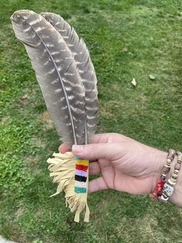
At least once a week, patients and staff gather in a circle to await the smudge smoke of burning lavender, sweetgrass, sage and cedar to pass in front of them so they may pause and reflect on what they need to hold onto and what they need to let go.
Smudging – a ceremony that uses traditional medicines to help cleanse the mind, body and spirit – is a traditional Indigenous practice offered as part of OSH’s Native Services department. Patients say they find solace in the opportunity to observe traditions that focus on physical, emotional, mental and spiritual well-being and one’s connection to the Earth and their place in it.
“We can lose our former selves in here (OSH), and it can feel hard to be connected to other people,” said Matthew, who said his appreciation for Indigenous cultures stems from his learning of his family’s connections to the Cherokee Nation and his friendships with members of the Navajo Nation. (A smudge feather and medicine bag he beaded are pictured above, right and below, left.) His grandmother taught him about medicinal plants, and he’s comforted by his memories of her burning them in an abalone shell.
“It’s been a part of my identity for so long and to not lose that and grow it and share with other people is really important to me,” Matthew said. “One of the highlights of my week is going to smudge and talking to Elders in Native Services.”
Anyone is welcome to join the smudge circle and to participate in other services offered by the department – patient, staff member, those who are affiliated with a Tribe and those who are not, said Kqalsan Mayuk, OSH Native Services program coordinator.
“It’s a spiritual program – it has to be open to everybody – or else why do it,” said Mayuk, who is a member of the Ktunaxa Nation, located in eastern British Columbia, Canada. “Almost everything we do is considered cultural and spiritual – artwork, beading, arts and crafts, smudges. Even when they’re beading you can watch how patients focus and change while they’re creating. The calmness that they come away with and the pride they take in making something for themselves or family, friends. It is spiritual.”
|
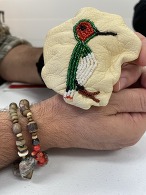
Patients have opportunities to learn beading techniques and connect through talking circle, readings and meditation, smudge ceremonies, hikes and one-on-one time with Native Services staff. The tradition of sweat lodge will return to both campuses later this fall for the first time since the pandemic.
Outdoor smudges use traditional medicinal plants, while for safety reasons, sprays are used for smudges offered within the hospital. Different plants are used depending upon the staff member leading the smudge, though generally, the smudge includes cedar (for protection), lavender (for calming), sage (for cleansing and purification) and sweetgrass (to remember one’s connection to Mother Earth).
For ChriStina Titus, the opportunity to smudge helps her stay grounded and focused on her recovery journey.
“Smudging helps me cleanse and helps me feel connected to my Father (Creator God) and Mother (Earth). It’s a whole cycle of connection and healing,” Titus said. “I’m just grateful because through Native Services I’m learning a lot more about how to deal with life as it is because it can be tough here at OSH, and I’m a recovering alcoholic and never really dealt with things emotionally-wise.”
Titus has explored her Tribal connections during her time at OSH.
“My grandmother was Salish,” she said. “I’m seeking wisdom and learning so much spiritually that I don’t think I would have if I wasn’t here – being balanced spiritually, mentally, physically and emotionally. I’m grateful today for what I do have.”
|
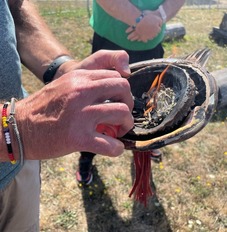
(Pictured right, Mike Patton prepares traditional medicines for a recent smudge ceremony.)
Balancing tradition and therapeutic practice
The majority of OSH patients – 72% – identify as white, while 2.3% identify as American Indian or Alaska Native.
Native Services staff say they think patients who are not affiliated with a Tribe seek out their support for a variety of reasons – interest in the culture, to explore spirituality and because they’re seeking other avenues of peace and healing.
“For some patients, if that’s the way they were raised, this is an opportunity to get back into that part of their lives. For others, it’s a new way to deal with their issues and find a new spirituality to support themselves,” said Brent York, who joined the OSH Native Services team in the past year. York is a member of the Colville Tribe and was raised in eastern Oregon on the Burns Paiute reservation and says his knowledge is also rooted in Paiute and Shoshone Tribal traditions because of familial connections.
“Growing up in a small community, it’s been validating to be able to teach and pass on the things that I know,” York said.
When Cazmine Bonnot started with the Native Services team, she said she was encouraged to see the respect patients, who were not Indigenous, held for spiritual and cultural traditions – like those she shares from her Hunkpapa Lakota and Muscogee (Creek) Nation traditions.
She plans to offer an advanced beading class to patients later in the fall that teaches decorative beadwork to create medallions and other art. She and York both said at times, it’s unbelievable that their job is to share their traditions with others.
“But this is not just a job,” Bonnot said. “I get so much in return – to see how people are healing themselves is encouraging to me in my own journey. This work will humble you.”
Two of the five members of Native Services – Gerald Weller and Mike Patton – while not affiliated with a Tribe – first began working with the Native Services team when they were in different roles at OSH because of their personal practice and community involvement. After their retirement, Weller returned to a full-time role and Patton to a part-time role with the Native Services team.
“In my prior work with patients, I saw that something was missing,” Patton said. “This offers a holistic approach for patients. In Native practice, we seek balance and look at the physical, emotional, mental and spiritual – it’s represented in the four directions. This really helps people find a better balance. It can be a great coping skill if someone is struggling, and they can be part of smudge or praying. My goal is to help people learn how to connect with their higher power – whatever it is, and as long as it’s positive.”
Weller said a major role of the team is to listen to patients without judgment and provide guidance.
“My mission here is to be of service and a guide – a lighthouse to help others find their own path and believing that there is no one path,” Weller said.
Recently, the department was able to transition its contract staff into limited duration positions with a plan to carry them over in late 2025 to permanent positions – a move that solidifies OSH’s commitment to offering holistic therapeutic practices to patients, Native Services staff said.
Staff have plans to expand opportunities for more patient involvement, including the advanced beading class where Bonnot will teach traditional medallion beading and the Good Medicine outings that will focus on volunteering in the community. The staff also help patients maintain connections within their own Tribal communities – like attending cultural celebrations. Patton recently accompanied one patient to the Confederated Tribes of Grand Ronde powwow.
“It was good to see his connection with his culture and how he values that. It was fulfilling to be able to help him do that,” Patton said.
|
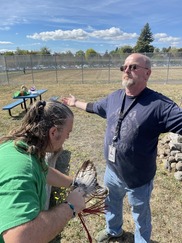
‘Humanizing experience’
Clint Allen is one of the patients who participates in weekly “Good Medicine” nature hikes led by Patton, who is often joined by Weller and OSH Chaplain Lisa Barnes.
Before the group leaves for the outing, there’s a smudge ceremony, and the hike itself is more than a walk.
“'Good medicine’ is a Native term that’s about healing and finding ways to heal,” Patton said. “It’s a way for them to connect with Mother Nature in a positive way and connect it to our own healing in our lives.”
The time to reflect in nature is sacred to Allen.
“My family is part-Cherokee, and I wasn’t really involved in any traditions before my time at the hospital,” said Allen, pictured above smudging Weller before a recent Good Medicine outing. “I’ve found a sense of stability and wellness in a place that can be stressful. There’s a mental and spiritual wellness that comes from being in nature, and it’s a humanizing experience to feel a part of regular life when we’re out in the community.”
Before a recent outing, Allen was dealing with some tough family news that he shared with the group. Following a smudge ceremony, they stayed encircled for prayers – passing around Patton’s red tail hawk smudge feather to mark the next person’s turn to share a prayer for him and his family. While they’re connected in a circle, it’s also clear that their connection is deeper. It’s familial.
That support when you can feel alone at the hospital away from family can make all the difference, Matthew said.
“I would be lost without it and would feel a lot different about the hospital if it wasn’t for these things,” he said.
Titus agreed.
“Having Native Services gives a sense of belonging and brings us together,” she said. “There’s a feeling of true community and acceptance. We’re helping each other.”
|
|
|

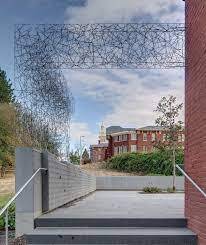
John Jacob Jordan fought in France in World War I, and by 1930 was working as a cook in a Columbia County restaurant. By 1952, at the age of 63, he was admitted to Oregon State Hospital for reportedly being “senile” and died 20 days later of pneumonia.
When no family came forward to claim him, Jordan became one of nearly 3,500 people who died between 1913 and 1973 at OSH or other state institutions and whose remains were cremated when family members could not be found.
For decades, the hospital made efforts to identify relatives of those who had been cremated but a lack of resources prevented progress. Thanks to new law allowing the publication of the list of names, advances in technology, a growing public interest in genealogical research and the support of staff and volunteers, those efforts gained traction about 10 years ago. Now, about 1,200 of the nearly 3,500 people listed in the OSH cremains directory have been “claimed” by close relatives – or in some cases, the Oregon Department of Veterans’ Affairs (ODVA).
Through its partnership with OSH, ODVA has identified 27 veterans, two children of veterans and one spouse who are eligible for burial in a national cemetery. The majority are buried in Willamette National Cemetery located outside of Portland.
“We’re committed to helping Oregon veterans and their families, and that’s a lifelong – even after passing – commitment,” said Joseph Glover, ODVA Appeals & Special Advocacy Division Director. “The reason we get into this work is we want to help our veterans and families in any way that we can. In some cases, that’s fulfilling a need and honoring their military service 100, sometimes 150-plus, years later.”
Ten years ago, OSH dedicated a memorial that honors the lives of the nearly 3,500 people whose remains were never claimed by family. OSH now holds an annual ceremony to honor those people – like Jordan – whose cremains have been identified and claimed by their family or ODVA in the past year.
Nearly a dozen families attended this year’s ceremony held Sept. 24 in front of the memorial, which features a room that displays copper canisters that at one time served as urns for the cremated remains. The cremains are now interred in a columbarium wall that surrounds the plaza and also holds the names of the nearly 3,500 so they are never forgotten.
|
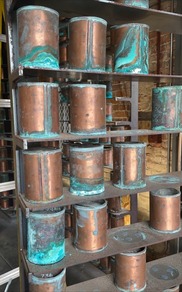
OSH’s Health Information Department works with families to transfer custody of the remains. Families receive their relatives’ cremains, as well as the copper canister that once held their remains long ago and a rubbing of their relatives’ name and birth and death years from the columbarium wall. (Pictured left are copper canisters that previously held the cremains of those who died at OSH and other state institutions.)
It’s a surreal journey for many families who are just now learning of a lost relation when contacted by OSH volunteer Phyllis Zegers.
Twylla Neal of Salem, and her mother, Marjorie, were surprised to receive news of Sarah Ellen Oldham, Marjorie’s great-aunt.
“We had never heard of her. I guess because it was hush-hush back then about mental illness,” Twylla Neal said.
After learning about Sarah Ellen, they were able to find other records – including a letter of a family member who inquired about Sarah Ellen after she died, but there’s no record as to why the family never claimed her.
“I don’t know if they couldn’t afford to,” Twylla Neal said. “We want to do the right thing by her, and we’ll bury her in Hood River with her father, Marion Oldham.”
After receiving the notice from OSH, Twylla and her mother visited the memorial to see for themselves where Sarah Ellen was interred for the past decades.
“I hope that now that she’s found and can be back with her family that she can be at peace,” Twylla Neal said.
“Yes, absolutely,” Marjorie said. “I pray and hope that she rests in peace.”
|

During this year’s ceremony, ODVA Director Dr. Nakeia Council Daniels (pictured right at podium) honored the eight veterans who were identified for a national cemetery burial in the past year: World War I veterans Ray Carpenter, August Hansen, John Jacob Jordan, Earl Pollock and Guy Cramer; and those who served during peace time: Filipe Castillon, Kenneth Hugunin and Thomas O’Connor.
“While we cannot undo the past, we can help provide some form of closure with the distinction and the reverence that our veterans deserve in honor of their lives and military service,” she said during the ceremony. “Each of these eight veterans raised their right hand to serve and protect this nation against all enemies foreign and domestic and my heart is full when I consider no matter their background, no matter their race, their religion, branch or conflict, they remembered their sworn oath and their commitment to this nation never wavered. And, today, we gather to show that our commitment to them and their families has and will never waver.”
Finding family connections
|
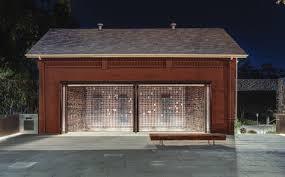
(The OSH Cremains Memorial building, pictured left, at night. Inside, shelves hold the copper canisters that previously held cremated remains.)
Searching for answers
From 1913 through 1973, OSH operated a crematorium and became the custodian of the unclaimed cremains of nearly 3,500 people who died while living or working at OSH, Oregon State Tuberculosis Hospital, Mid-Columbia Hospital, Dammasch State Hospital, Deaconess Hospital, Oregon State Penitentiary and Fairview Training Center.
Zegers’ own genealogical research led her to discover a relative was hospitalized at OSH. Though this relative’s remains were not in OSH’s custody, she wanted to learn more about those who were still waiting for their families to discover them. So, Zegers began volunteering to research the names and then help write narratives of those on the OSH cremains directory in hopes of connecting them with relatives. Her work soon extended to her reaching out directly to potential relatives through letters and even phone calls. The outreach is rewarding for the retired educator as she connects families to their own history and learns from them, as well.
|
“There’s so much to learn about the history of mental health, the country and state and how society operated,” said Zegers about why she continues her quest. “I also enjoy piecing together the stories of these people and learning from them. For instance, there’s someone on this year’s list – Thomas Langtry, who had a very severe traumatic brain injury as an adult and had more than his share of struggles. He was institutionalized at OSH later in life. Your heart goes out to how people dealt with issues out of their control. It was kind of amazing that he took care of himself for as long as he did with as much as he was dealing with.”
In some instances, family members reach out directly to the hospital because their own genealogical research leads them to the narrative Zegers wrote on findagrave.com. Each entry that she’s entered includes background and a link to the cremains directory.
That’s how Christin Huja discovered her relative John Losli’s cremains were still in the hospital’s custody. A visit to Switzerland launched Huja’s genealogical interest into great-great-grandfather Jacob’s past. Then a family reunion ignited a cryptic conversation over a photo that included a relative identified as John whom no one knew about. At the reunion, someone recounted he had been told, “We don’t talk about John,” when asking older relatives about the photo.
The global pandemic sidelined Huja’s search, which she picked up again about a year ago when an old Oregonian article about John Losli from 1908 mentioned he had been committed to the hospital. It solved part of the mystery.
“No wonder they didn’t want to talk about him. Obviously at that time, mental illness was kind of taboo and people were really ashamed,” Huja said.
Sadly, Huja learned about the lengths her family went to forget John when she found records that her family was aware he was in the hospital and able to be released into their care, but they declined.
“That was gut-wrenching. He was let down by our family, and I can’t imagine leaving his ashes there,” she said.
Now, her family talks about John.
“He died alone in a hospital, but we can remember who he was and acknowledge him in our family and that it’s not some big secret. Maybe it will help people to talk about mental illness with their families and talk about their families’ histories.”
Honoring the past
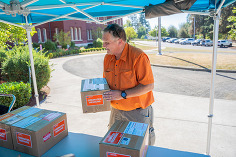
(Mark Dodge, pictured left, picks up the cremated remains of his relative, George Dodge after the 2024 OSH memorial ceremony.)
Mark Dodge also discovered that his relative George Dodge died at OSH and his cremains were unclaimed by family through his own research, which has also led him to uncover discrepancies in existing records that paint an inaccurate history of his third cousin’s life – like his service in the Oregon Military Police Corps during World War I.
“He was one of less than 250 volunteers who signed up to be part of a home guard unit during World War I,” Mark Dodge said. “There was concern about sabotage or insurrection or interruption of the supply train. He was part of the unit based in Pendleton that around to different facilities, lumber mills, grain silos, places where trains would pick up commodities. They were also involved in pursuing illegal alcohol production and supported three dozen wildfires that year, too.”
He has filed requests to correct vital records to include George’s correct age and to recognize his military service. His research also led him to learn that George was an employee of a popular hot springs and lodge in Union, Oregon, which drew travelers by paddleboat and train who needed transport to the lodge.
|
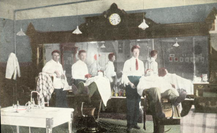
“George was one of the wagon masters and also a barber at the then-world famous Hot Lake Springs Sanatorium in the early 1900s,” Mark Dodge said.
He has a historical postcard image of barbers at the sanatorium, shown right, and hopes George's medical records will include a photo so he can identify him. He plans to spread George’s ashes near the old sanatorium.
Mark Dodge served in the Oregon National Guard and will share what he learns about his relative and the Oregon Military Police Corps with the Oregon Military Museum at Camp Withycombe.
“We’re proud that he had a unique part of Oregon history through his service in the Military Police Corps,” Dodge said. “We’re proud and want to share that story.”
Because records are scarce, it can take years to identify and confirm one’s military service. In many cases there may be veterans listed on the OSH cremains directory whose service is unable to be verified because a lack of records. Glover credited ODVA researcher James Connolly for the meticulous work scouring records and piecing together clues that can help the National Cemetery Administration make its determination for burial in a national cemetery.
OSH and the ODVA research team both continue their work to help find connections for those people who remain unclaimed on the OSH cremains directory. There are still some names pending consideration by the National Cemetery Administration, including a few names submitted by a private researcher that were not on the ODVA research team’s initial lists as potential veterans.
“This is something that is an honor for us to be able to do – to honor them and their military service,” Glover said. “For those who OSH hasn’t been able to find their families, this gives us the opportunity to bury them in their rightful place beside their brothers and sisters in arms.”
Learn more about the OSH Cremains Directory and OSH Cremains Memorial online.
|

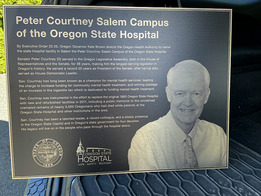
On July 16, OSH honored the contributions of former Oregon state legislator, Peter Courtney, with a planned ceremony marking the naming of the Salem facility as the Peter Courtney Salem Campus of the Oregon State Hospital.
Sadly, Courtney passed away earlier that day. His family requested that OSH continue with the ceremony because it meant a great deal to him. Courtney was the longest-serving legislator in Oregon’s history having served in both the House of Representatives and Senate for 38 years.
He was instrumental in the replacement of the original 1883 Oregon State Hospital with new and refurbished facilities in Salem and Junction City as well as a public memorial to the unclaimed cremated remains of nearly 3,500 Oregonians who had died while patients at the Oregon State Hospital and other institutions in the area.
Members of Courtney’s family, former colleagues and friends attended the ceremony.
Several guests shared remembrances and gratitude for the late senator’s contributions to the hospital and to all Oregonians. Speakers included Gov. Tina Kotek; OHA Director Sejal Hathi, M.D., MBA; OSH Interim Superintendent Sara Walker, M.D.; and OHSU Chief Administrative Officer and Chief of Staff Connie Seely, who served as the late senator’s chief of staff from 2003-10.
The renaming of the Salem campus is in accordance with Executive Order No. 22-25.
|
|
|


When patients arrive at Oregon State Hospital, many are admitted with only the clothes they are wearing, but through the hospital’s Volunteer Services, staff are able to connect patients with the comforts of home – whether through clothing, books, board games or stationery to stay connected to their family and friends.
“We’re fortunate that both staff and the community support us through donations that make a real impact on the patients we serve,” said Ryan Stafford, Volunteer Services director.
The Volunteer Services department helps coordinate donations, volunteers, and outreach like OSH participation in food and blood drives to support the community. The small staff of two – Stafford and Lenette McClellan – make a big difference in the lives of patients and staff alike.
“A backpack may seem like a simple thing, but for patients who are ready to discharge, it means everything,” said Jen Killikelly, an OSH psychiatric social worker who helps patients prepare to discharge. “Aside from being able to hold their belongings, a backpack or duffel also keeps paperwork needed to obtain a valid ID or apply for benefits and contacts for community supports safe and easily accessible.”
While duffel bags and other types of luggage are invaluable, backpacks are preferred by patients.
“When they return to the community, discharging patients want to blend in and not feel like an outsider,” Killikelly said. “Backpacks are used by people from all socioeconomic backgrounds and are carried at all times of the day. Whereas a duffle bag or suitcase appears more transient and is not as easy to transport.”
The donations also impact patients’ mindsets as they prepare to return to their communities, too, she added.
“When patients see me arriving on the unit with backpacks, their eyes light up. As they examine the selection, they engage in conversations about their future with the enthusiasm of a student on the first day of school,” she said. “They share past struggles and aspirations about their future. I think leaving with a backpack provides patients with hope. I would like to thank all the donors for contributing to their optimism.”
Volunteer Services accepts donations year-round, and recently launched a coordinated effort to list needs on an Amazon registry to focus on the greatest needs for donations, like backpacks, as well as items to support current patients with books, art supplies, magazines. The outpouring from the community is always humbling, Stafford said.
“We’ve received hundreds of donations from our recent donation drive,” he said. “We also had a wide variety of donations. We received everything from basketballs to coloring books to Magic: The Gathering playing cards. Each gift is a kind gesture. The generosity we receive is amazing.”
The Amazon list will reset in November to include specific requests from patients for the holidays as the team prepares for its holiday program, Caring Tree, that ensures each patient receives a gift.
“We recently sent out letters to groups who have supported us in the past. We invite any groups or individuals who would like to help out with Caring Tree this year through committing to fill gift request tags from patients (averaging $35 per tag), donating via Amazon (or cash/check donation), or volunteering to wrap gifts,” Stafford said. “There are lots of opportunities to help complete our goal of a gift for each patient… either giving their time to organize and wrap gifts or through donations of items that patients have requested.”
“It’s our favorite time of year because we meet so many people in the community who want to support OSH patients,” he added. “That outside support means a lot to us and a lot to the patients we serve to know that the community cares about them.”
|
|
|

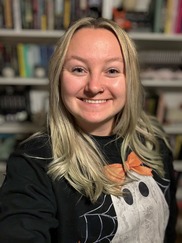
Nursing staff at Oregon State Hospital are among the largest team who support the daily care and support of patients. Their care and engagement contribute to the therapeutic environment of each unit where patients spend the majority of their time.
For nearly six years, Maranda Fouts has worked as a registered nurse at OSH.
“I enjoy helping patients during their most difficult moments,” Fouts said.
A key part of nursing staff’s job is building trust and engaging with patients, so they know they are supported, she said.
“Many of these patients need someone to talk to, to build rapport with, so that in moments of crisis, they know that there is someone they can trust to help them during a difficult time,” she said.
In the past year, Fouts moved into a leadership role as a nurse manager overseeing several patient floors because of her love of teaching others. During her career at OSH, she’s had the opportunity to serve as a preceptor for nursing students, a clinical instructor, and prior to moving into her current position, assisted other nurse managers. She said she’s appreciated the opportunities for professional development and growth.
For a nurse considering a career at OSH, Fouts encouraged them to learn more about working at a psychiatric hospital and the daily, positive impact they can make on someone’s life.
“The way society portrays psych hospitals is not a true reality,” she said. “People do not realize that these patients could be any of us.”
To explore OSH careers in nursing and other opportunities, visit OSHJobs.com.
|
|
|

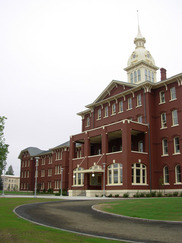
The OSH Museum of Mental Health is a nonprofit museum that tells the stories of the people who live and work at Oregon State Hospital and the history of mental health practices.
Exhibits feature a timeline of public psychiatric institutions in Oregon, historic diagnoses and treatments, what life was like for patients and a special exhibit featuring how patients and staff were involved in the production of the movie, "One Flew Over the Cuckoo's Nest" on the Salem OSH campus.
The 2,500 square foot museum is located in the oldest building on the Oregon State Hospital campus and includes permanent and changing exhibits. The museum is currently run by volunteers and supported by the generous donations of community members and competitive grants.
The museum is open from 10 a.m. to 4 p.m. Thursday to Saturday.
|
|
|

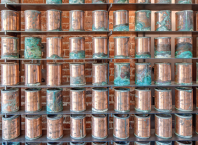
OSH invites anyone who thinks they may have a family member who passed away at OSH, Oregon State Tuberculosis Hospital, Mid-Columbia Hospital, Dammasch State Hospital, Oregon State Penitentiary or Fairview Training Center to check the online directory.
Families who identify relatives on this list and want to claim the cremains should complete and submit the “Request for Cremated Remains” form. Questions regarding the cremains can be directed to the OSH Health Information Department at 503-945-2976 or at osh.cremains@odhsoha.oregon.gov.
|
|
|
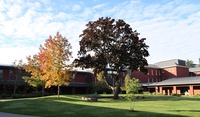
The Oregon State Hospital Advisory Board includes community members, patients and staff and its work supports patient care, safety and security. As part of its role, the board may review state and federal laws related to OSH policies and procedures and make recommendations to the OSH superintendent, Oregon Health Authority and Legislature.
The board’s remaining 2024 meeting is at 1 p.m. Nov. 21.
|
|
|
|
The Recovery Times is a quarterly publication that shares stories about the people and programs of Oregon State Hospital in support of OSH’s vision of hope, safety and recovery for all.
OSH serves a patient population that is traditionally marginalized, stigmatized and underserved, including many people with co-occurring disorders and those impacted by structural racism, and disproportionally represented in the criminal justice system.
|
|
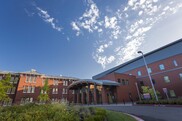 |
|
|
If you need mental health support for any reason, help is out there.
|
|
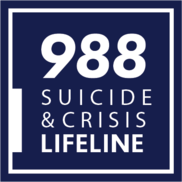 |
|
|
|
|
|